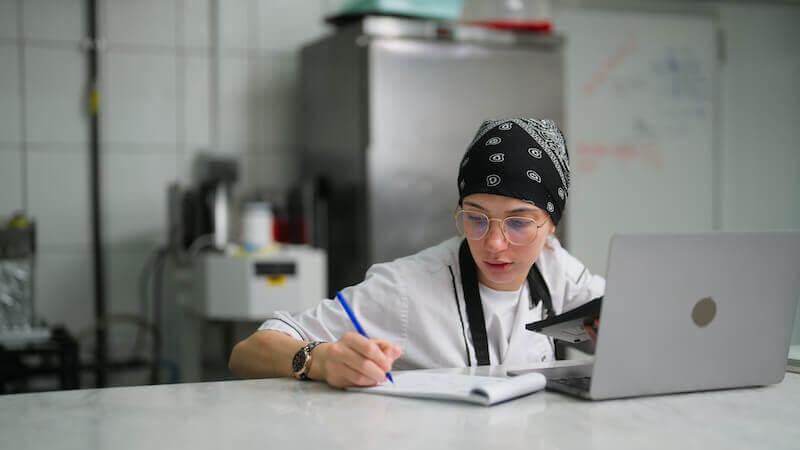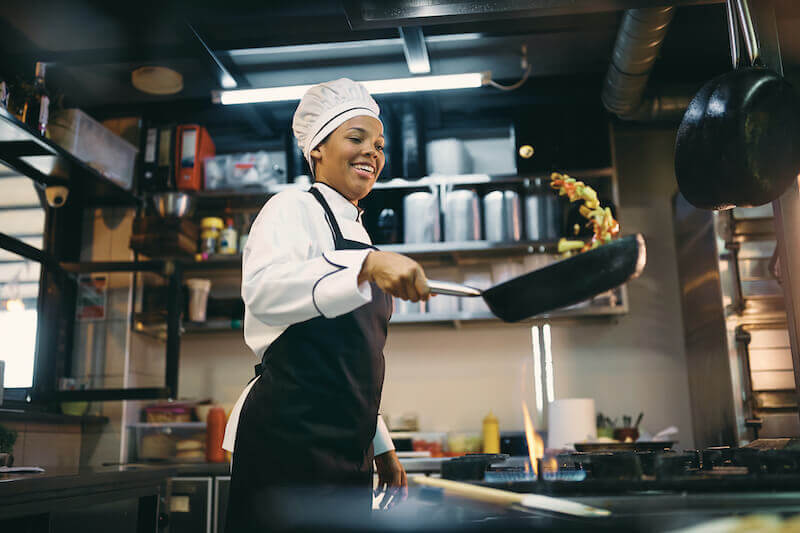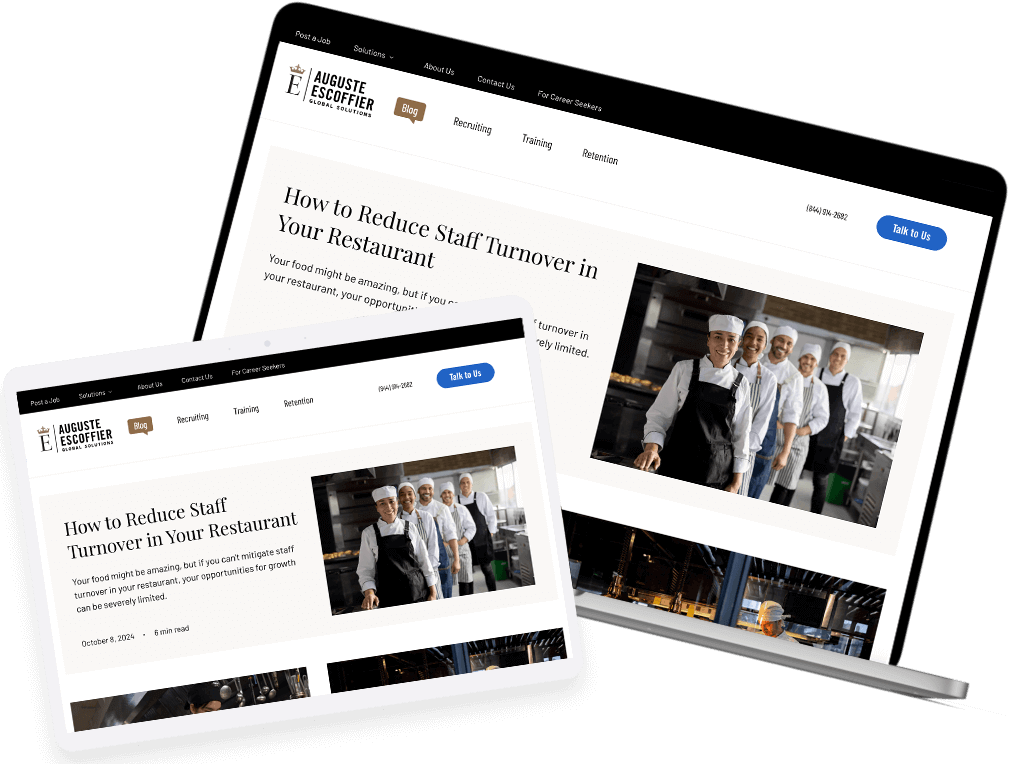
How to Train Your Restaurant Employees
Reduce turnover, save costs, and improve performance with custom training for restaurant employees. Learn how you can invest in your team’s growth.
Restaurants are hiring . . . a lot. The restaurant and foodservice industry is on pace for 150,000 jobs in 2024, and nearly half of operators say they expect competition for employees to be tough, according to the National Restaurant Association’s 2024 State of the Restaurant Industry report.
All of that hiring results in a whole lot of training. Any employer wants their employees to get up to speed quickly so they can focus on serving customers, but be careful not to rush through this critical first step. A great training program might help you keep your employees around for longer, lowering your turnover and reducing expenses.
In other words, good training might lead to less training overall. Find out how you can better train your restaurant employees.
Good Training Can Mean Good Financials
You want your employees to thoroughly understand the tasks at hand so your restaurant not only serves the best dishes, but also offers excellent hospitality, boasts exceptional health and sanitation standards, and runs as smoothly as possible.
There’s also the matter of profit and loss. Most restaurants will experience employee turnover, and the key is to limit it as much as possible.
The National Restaurant Association estimates that it costs restaurants an average of nearly $6,000 to replace a single hourly employee per year in staff turnover. With the average restaurant’s profit margin hovering around five percent, a reduction in turnover might make a significant difference in your bottom line.

Understanding the Basics of Employee Training
The best employee training is crystal clear about roles and expectations, with good communication that happens well before the employee is ever hired and continues throughout their time at your establishment.
Training actually begins with the job posting. Make sure your descriptions are accurate and thorough, and that prospective hires understand what they’re applying to. This helps reduce or eliminate frustration and confusion later on. The interview process should be similarly clear in describing the role as well as asking good questions to understand a future employee’s experience and their goals.
Once an employee is hired, the first step is to provide them with excellent onboarding materials and make it clear they are welcome to ask questions. A combination of written instructions plus quality mentorship can help iron out wrinkles and get employees up to speed faster; clarity also tends to lend itself to happier employees.
From the earliest stages of the interviews and training, you can also show employees how they can advance in the organization. Workers who know they can move up tend to stick around longer.
Another key element to good employee training is to offer workers skills training and education to help them stay abreast of the best practices in their role as well as improve upon their skills. Your employees can continue developing their skills via a platform like ESource, which offers everything from technique videos to courses. These tools can be valuable for on-demand training of practical skills your employees need but that you might not have time to teach.
And for employees who want to do even more, you might consider Work & Learn, a flexible program that offers a scholarship for employees’ culinary education through online classes offered at Auguste Escoffier School of Culinary Arts.
Shortcomings of In-House Restaurant Employee Training
Traditionally, aspiring chefs would enroll in culinary school full-time and might not begin their career in the kitchen until after they graduated. Then, they would continue to learn from their supervisors and more experienced colleagues. This method still works for some, but it leaves many others behind.
Fewer and fewer aspiring cooks and chefs have the luxury of focusing full-time on a culinary arts program prior to employment. And this is making it harder than ever to find skilled employees.

Plus, while there are many wonderful cooks and chefs who are willing to train their staff, that doesn’t mean they are necessarily adept educators. Teaching is its own unique skill. And an apprentice can only become great if they’re getting training and instruction.
There are, of course, some things that employees must learn on the job, like proprietary recipes, restaurant-specific operating procedures, and specialty techniques. But it can be much easier for an employee to absorb and retain these lessons if they’ve also established a strong foundation of culinary technique and fundamentals. Plus, learning while concurrently working in a kitchen is a unique situation that can allow for putting concepts into practice immediately!
Hire and Train Skilled, Passionate Employees With the Work & Learn Program
Escoffier has long been making culinary school more accessible through online degree and diploma programs. Now, the Work & Learn program from Auguste Escoffier Global Solutions is going a step further to bring pioneering employers together with passionate cooks, to everyone’s benefit.
What Is Work & Learn?
When a food service operation teams up with Auguste Escoffier Global Solutions for Work & Learn, they can secure access to a team of business, culinary, and education professionals for each employee who enrolls in Escoffier’s online program.
By partnering with Auguste Escoffier Global Solutions for Work & Learn, an employer’s employees can have access to special scholarships at the school.
Employees are eligible for a $1,000 scholarship upon sign up, increased scholarship amounts are determined by an employer’s tuition assistance program with matching available up to $5,250.
With this online education, the employer can work alongside their employees as they grow in their skills and grow with the company. And since Escoffier is a state licensed and nationally accredited institution, students receive a reputable, reliable degree or diploma without quitting their job or taking a leave of absence.
This program also establishes a culture of learning and proves that an employer is willing to invest in their team. This kind of giving can earn employee loyalty and spread positive word-of-mouth about company values. It’s a win for everyone.
Access Specialized Skills-Based Education With Customized Training Plans
What if there’s a specific skill that employers want a team or department to learn? Custom training from Auguste Escoffier Global Solutions can provide upskilling opportunities that make employees better equipped to meet the challenges of the kitchen.
Custom training can encourage increased employee engagement and growth, helping the team to feel excited and enthusiastic about their work and the company. Taught by professional Chef Instructors using proven education methods, this type of training can lead to better employee retention and higher-quality performance.
Why Outsource Training?
Employers know what their teams need to learn. But unless they’re trained educators, they may not know the best way to teach the information for clarity and retention.
That’s why Auguste Escoffier Global Solutions leverages its relationship with Auguste Escoffier School of Culinary Arts, an accredited educational institution that is adept at building competency-based courses. Instead of teaching individual recipes or single processes, this type of training is organized with clear objectives and learning outcomes to work towards. Learning how to do something is helpful in the near term. But learning why it works will create stronger, empowered employees in the long run.
For example, a restaurant could teach its employees how to make a single salad dressing. Or it could provide a custom training program that teaches the science behind emulsification, offers techniques based on batch sizes, explains troubleshooting options, and more—all supported by its own internal dressing recipes.
Custom training plans from Auguste Escoffier Global Solutions can also provide mixed multimedia training that aids in knowledge retention. Additional resources like a written narrative, video and audio narratives, photos, diagrams, and slide presentations create a stronger educational experience than a one-dimensional video or written course.
Escoffier Global offers a professional production crew and studio to make high-quality demonstration videos. The crew can travel to the partner facility, or the content can be created in the Auguste Escoffier Global Solutions studio. The resulting courses are sleek and polished.
Finally, these custom training programs are taught by skilled Chef Instructors who know how to train employees. With a large roster of specialized instructors to choose from, finding the right person to teach each course is simple.
The Future of Restaurant Employee Training
The old method of employee training works for some. But it leaves others behind. Forward-thinking restaurants and food service establishments will have to look to new ways of filling their kitchens with trained employees if they want to stay competitive.
Instead of fighting with other kitchens for talent, Escoffier Global’s custom training programs can help food businesses to nurture the talent they already have and attract career-oriented cooks. It benefits the employee, the employer, and the industry as a whole.
Questions? Contact the Auguste Escoffier Global Solutions team to learn more about Work & Learn and customized training programs for your employees.


